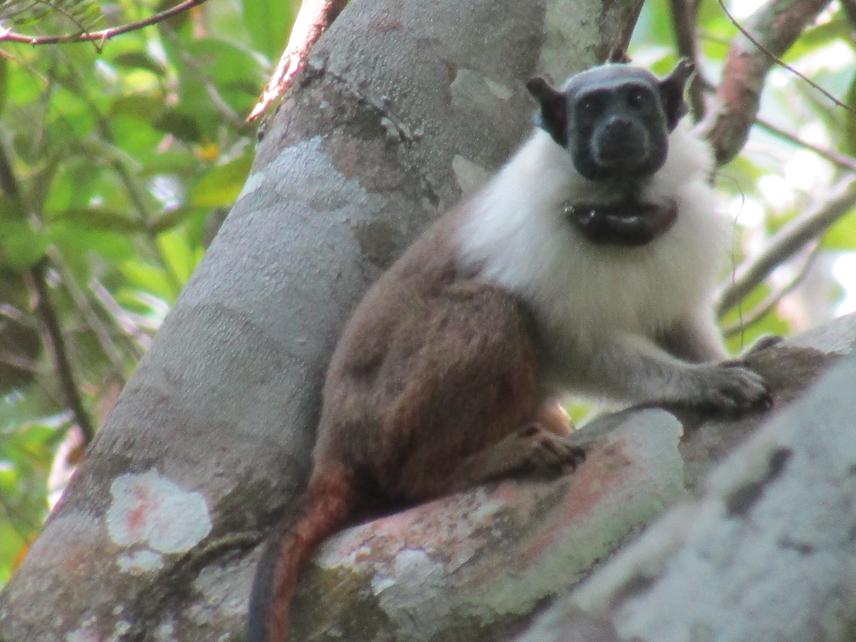Tainara Venturini Sobroza
Other projects
28 Nov 2022
Barriers that Connect: Evaluating the Role of Wildlife Corridors in Mitigating Noise and Improving Habitat Quality in an Amazonian City
Sounds of anthropogenic origin can affect acoustic communication of many species, as their high volume can mask animal sounds. The pied tamarin (Saguinus bicolor), or "sauin", is an endangered primate species. Regional conservation planning includes creating ecological corridors to connect existing forest fragments. Many of these fragments are embedded in a noisy matrix and the objective of this study is to understand how the acoustic environment affects the communication behaviour of S. bicolor. We will record the acoustic environment as well as the tamarin’s behaviour, with a focus on communication behaviours such as vocalizing and scent marking. By doing so we intend to test whether tamarins produce calls with different properties or use other communication channels, such as olfaction, in noisy areas. Thus, we expect to better understand the vocal behaviour of urban populations and add to the conservation efforts by identifying suitable habitats for the species.

Alfa female with radio. © Tainara Sobroza
Sounds of anthropogenic origin can affect acoustic communication of many species, as their high volume can mask animal sounds. Consequently, animals may adopt different strategies to optimize their communication. The pied tamarin (Saguinus bicolor), or "sauin", is an endangered primate species occurring in the urban area of Manaus, Amazonas, Brazil. Regional conservation planning includes creating ecological corridors to connect existing forest fragments. However, many of these fragments are embedded in a noisy matrix, and we do not know how such noise-filled urban environments might affect acoustic communication. The objective of this study is to understand how the acoustic environment affects the vocal behavior of S. bicolor. Nine groups of tamarins will be followed and recorded during a year in fragments with different noise levels. We will record the acoustic environment as well as the tamarin’s behaviour, with a focus on communication behaviours such as vocalizing and scent marking. By doing so we intend to test whether tamarins:
1) produce calls with different acoustic properties in noisy areas;
2) change their daily pattern of vocal communication in noisy areas;
3) avoid noisy areas inside their home ranges;
4) use other communication channels, such as olfaction, in noisy areas;
5) produce calls and chemical signal with redundant information. Thus, we expect to better understand the vocal behaviour of urban populations of tamarins and add to the conservation efforts by identifying suitable habitats for the species. This is especially important for the establishment of urban ecological corridors.